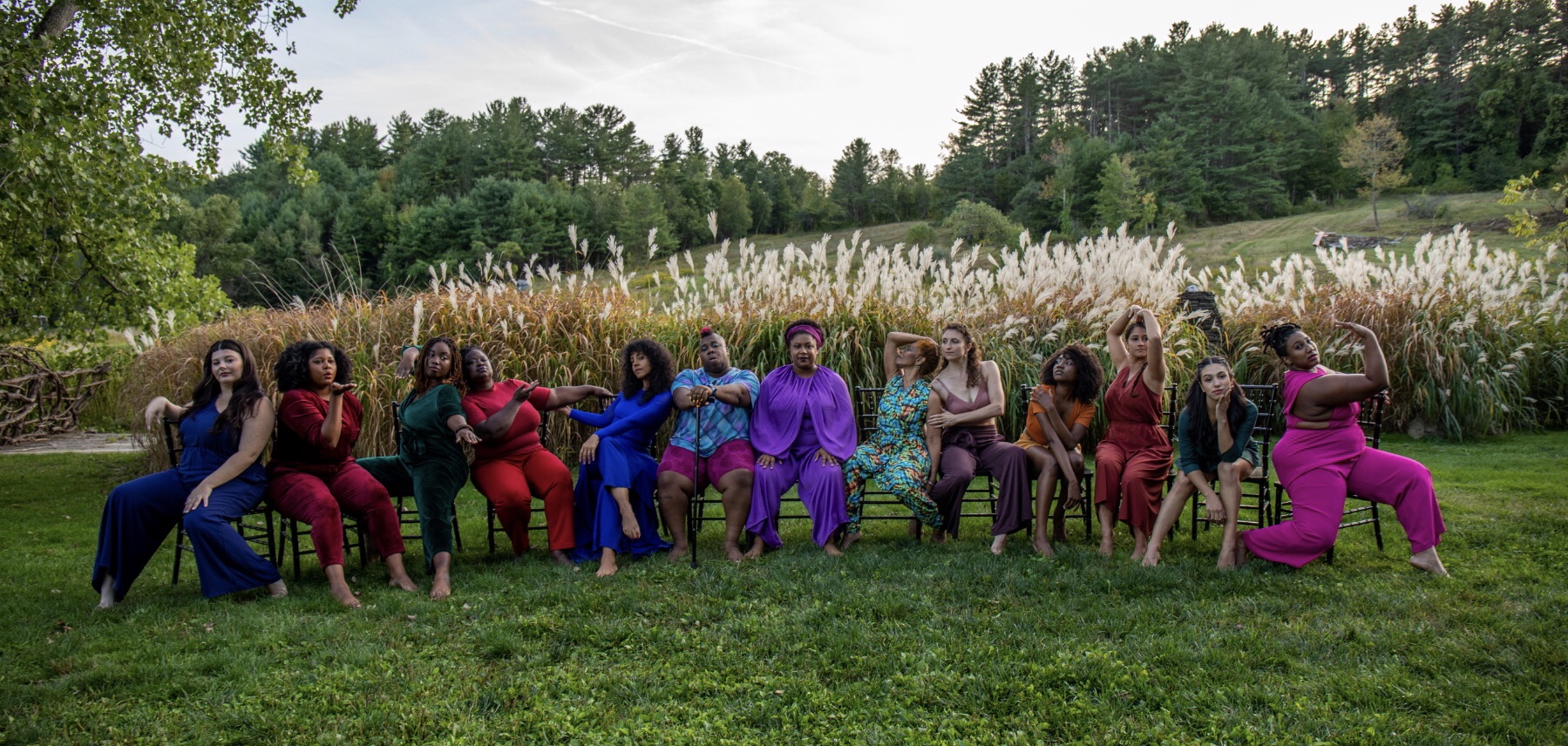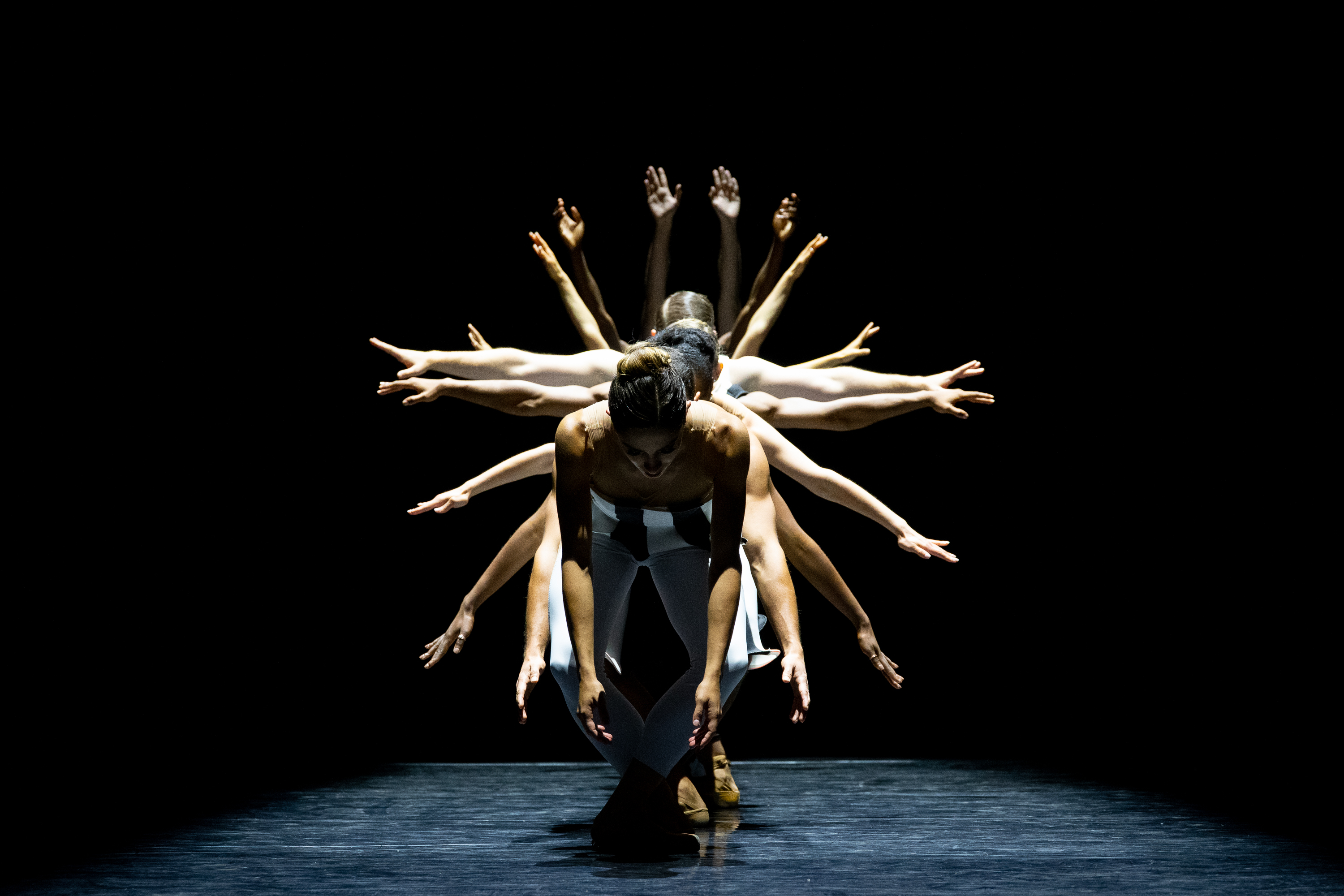INCHING TOWARD REDEMPTION AND RESOLUTION: CHRISTOPHER K. MORGAN & ARTISTS AT AMERICAN DANCE INSTITUTE (ADI), ROCKVILLE, MARYLAND
May 30-31, 2014
By Luella Christopher*
BY THE INCH, the title of Christopher K. Morgan and Artists’ evening of four new and slightly older works, aptly conveys both “shock moment” in the ADI resident artist’s powerful one-man ballet, “The Measure of a Man” (see below) and metaphor for wielding every bit of stage to present the dance. The California-born and ethnically Hawaiian choreographer has so much to say that he doesn’t waste one inch of it.
The evening’s pre-performance lecture described Morgan’s corpus of works as a blend of ballet, theater and storytelling. What is lobbed at the audience by way of ballast and hyper-athleticism, social and cultural commentary is balanced by the sheer classicism of the ballet movement. Exquisite lines are most evident in Morgan’s first new work of the evening, “In the Cold Room”.
In this world premiere, stage dimly lit by intention, Morgan artists Giselle Alvarez, Tiffanie Carson and Amanda Engelhardt comprise an exceptionally well-balanced trio in terms of technique and visage. Not always the case in small-ensemble modern dance, it’s a strong point for Morgan. Using the body as gesture, the three women open the piece with undulating hips, frequently pairing off as the third dancer watches. Floor-bound rolls become shapes – almost as if Morgan is sculpting the entire stage. Knee bends in wide second position, leg circles in the air terminating in forward lunges and inside attitude turns all emphasize the expansive use of space even though the movements are floor-bound. The dancers move together and as opposites in a progression that is far from the stasis and poses characteristic of much post-modern dance that can’t fathom where to foray next.
As the lights go up, Morgan’s movements become airborne for the first time. Frenzied dissonances from composer and musician Wytold’s electric and acoustic cello mark the shift. A singular light from the ceiling focuses on one dancer’s hand, foot, face and then on the other dancers. Wytold becomes part of the choreography. He directs a mirror at the first soloist as the other two women walk around, allowing them to explore and play with the light.
The musical score is mostly scripted but contains sections of improvisation within the structure, according to local artist Wytold. He plays a cello with two extra strings, transforming it to a stand-up bass that is alternately plucked and bowed. Sounds are “looped” to achieve multiple voices with a live rock-orchestral accompaniment of bass, viola, violin, flute, guitar, banjo and percussion. The effect is full-bodied and eclectic.
“Bruised”, the evening’s second world premiere (also to music composed and performed by Wytold), continues Morgan’s gift for extraordinary grace and physicality. It’s a duet for Corey Landolt and Andile Ndlovu, appearing courtesy of Washington Ballet. Spoken words are central to establishing the mood of the piece: “I was walking along and didn’t even see you”. The two men encounter each other but fail to communicate. The text undergirds their eventual clash, from rolling over each other’s backs to separating and startling the audience with such gripping moves as bison leaps (both knees bent) in place. The duet delivers a strong emotional counterpoint to the first piece.
The third work, “Selling Out” (2011) seems to blend the styles of the first two, even though it represents an earlier creation when Morgan formed the company four years ago. Grandly executed by female soloist Tiffanie Carson, assistant director of the company as of January 2014, the piece begins with Carson swaying to the beat, then shifts to swing as spoken narrative is introduced. “Work it . . . you’d better get paid . . . watch yourself”. There are percussive arm movements, even wrists and fingers, then some boxing and back hitchkicks. A formidable if abbreviated vehicle for this very talented dancer who – like Morgan – hails from Orange County, California, “Selling Out” tantalizes and delights. And this merely concludes the FIRST half of the evening’s offerings!
“The Measure of A Man” (2004) – only the second time this work has been performed in the D.C. area – marks a collaboration between Morgan and Monstah Black, a.k.a. Reginald Ellis Clump, resident artist at Dance New Amsterdam and creator of the forthcoming electro-funk operetta “Black Moon”. The curtain opens to a collection of props (clothes and dressmaker’s torso-only mannequins) hanging from above, accompanied by the directives of vocalist Monstah: “Be like a brother and go into mortgage finance”. Morgan raucously pulls a contractor’s tape out of his pants, apes the measuring of his private frontal anatomy, then walks over to the audience. Assuming the stance of a gangsta rapper with tight-fitting cap, he pop ‘n locks until overtaken by strains of “Ya got it wrong . . . gotta be a Renaissance man . . . need more refinement”.
The sound score switches to Tschaikovsky’s “Nutcracker” (short clips of Waltz of the Flowers, Dance of the Reed Pipes, Sugar Plum) as Morgan embraces the headless torso-mannequin draped in a coil tutu. Though the voiceover is satirical and irreverent, Morgan dashes off a balletic set of sissonnes or assemblés.(too quicksilver to record for certain which ones). He then dislodges the coil tutu from the half-mannequin, pulling it over his own head. Morgan next dons a set of boots, hot pants and sunglasses. Still wearing the coil tutu, he struts about, then removes the tutu and disrobes completely – one article of clothing at a time. The lighting changes to a ghoulish green. Sitting in the back, he ponders the dictum to “be strong” but retains a crouched position.
To a musical shift (Sigur Rós) and allusions to the Bible (“When I became a man, I put away childish things” from Corinthians), the Declaration of Independence (“All men are created equal”) and Victorian poetry (“A man’s reach should exceed his grasp”), Morgan tosses off a few turning cabrioles.or brisés (again, too fast to know for sure).* Then he caves to warring voices (“Real men don’t cry”) and shouts (“Shut up!”). Morgan is either arguing with the sages, himself or both. Marching around the stage, he spanks himself on the hip, stomach and genitals – a clear reference not just to the phenomenon of somber questioning but a darker self-flagellation. He assumes a downstage crouch, then walks toward to upstage center where he undresses completely, then revolves to the front on a now dimly-lit stage to gaze plaintively at the audience. Morgan has met his nemesis and the picture, while poignant, is not pretty.
Indeed, Morgan’s portrayal of a man who succumbs to self-doubt is heart-rending. What could easily have lapsed into mere shock-value choreography and staging is understated just enough to give the storytelling a universal quality. The audience is left exhausted but appreciative of the disparate personas adopted by Morgan’s character. It could be a biography about anyone gargling with the issues of race, sexuality and gender identity.
Metro D.C. patrons can savor more opportunities to follow the career of this unique artist and his company since Morgan is moving from a just-concluded three-year residency at American University (as well as the dual ADI, Md./Alden, Va. residency) to the University of Maryland in the fall of 2014. The company already gained currency with local dance afficionados when Morgan won the Dance Metro D.C. award for Outstanding New Work in 2010, “+1/-1″ (commissioned by the U.S. State Department and CityDance; performed at the Ramallah International Dance Center). Next, he was profiled in Dance Magazine (2011) as one of six “break-out” choreographers. Morgan is now in great demand as an adjudicator on dance panels and educator through the company’s “Dance and Dessert” program. The weekend’s sold-out performances testify to his ever-expanding stature and add to our album of memorable modern dance performances.
Copyright © 2014 by Luella Christopher, *author of Pirouettes with Bayonets: Classical Ballet Metamorphosed as Dance-Drama and Its Usage in the People’s Republic of China as a Tool of Political Socialization, Ph.D. dissertation, The School of International Service, American University, Washington, D.C., 1979 (archived at University of Michigan). Dr. Christopher’s opus includes a cross-cultural technical manual of dance in French, English and Chinese with original pen-and-ink drawings by the author.
Review commissioned and published by IsItModern? © 2014




